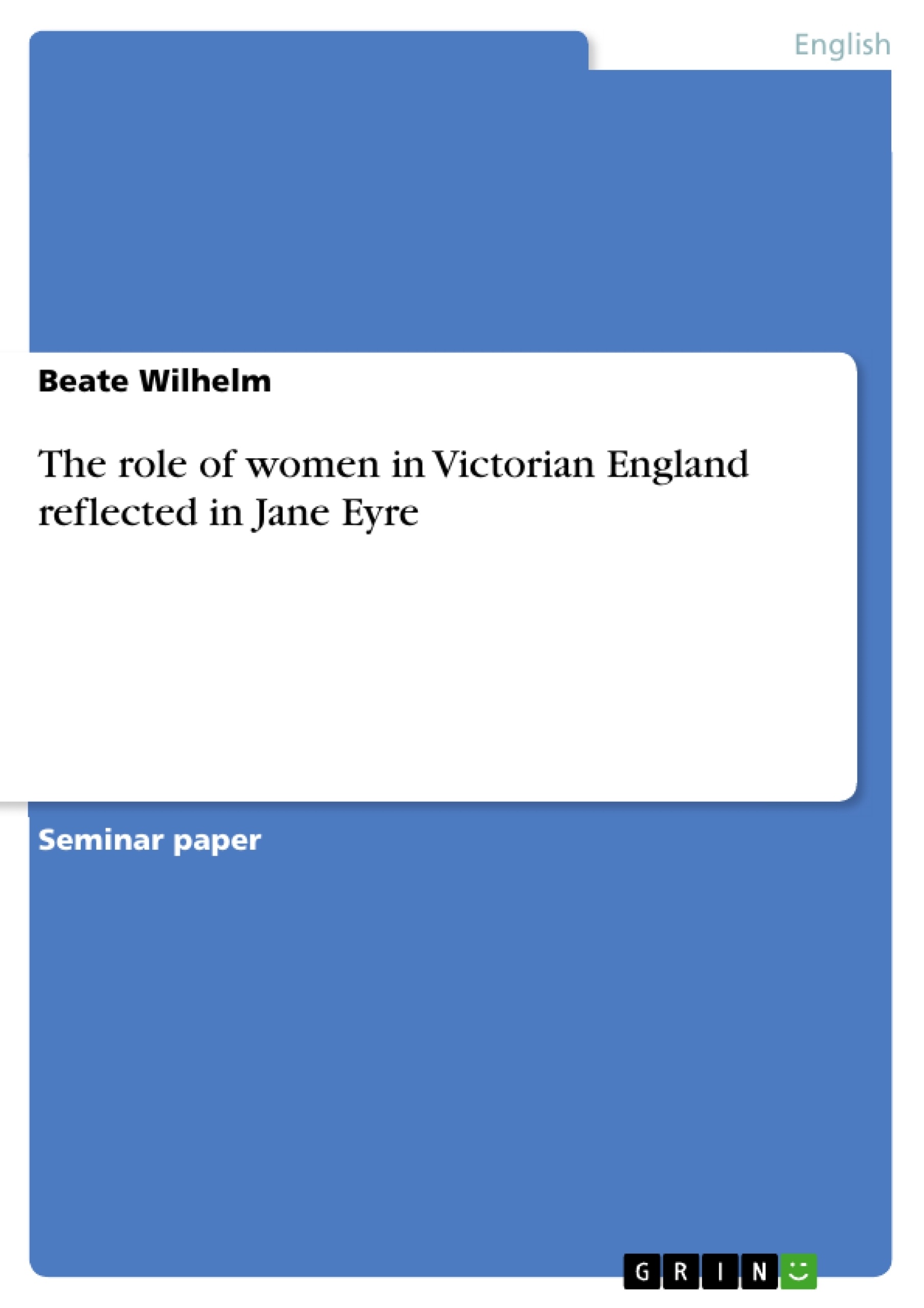With Jane Eyre, Charlotte Brontë created a literary work that shook traditional conventions in Victorian England by showcasing the feminist view so clearly. It is a work that refutes denial and ignorance of women’s sexual identity and passion. Jane Eyre shows that women are capable of being passionate and of experiencing fulfillment in a marriage where the partners are equals.
In the following essay, I will explain the role and some major problems of middle–class women in 19th century Victorian England. Moreover, I will elaborate on how ‘the woman question’ (Martin, J. 1999:15) appeared and stress the fact that it brought about a complete and complex change in English society.
In chapter 1, the emphasis will lie on the historical background which shall serve as a basis for the following chapters where the main focus is made on the analysis of Charlotte Brontë’s text Jane Eyre.
I will illustrate that Jane Eyre is a woman who, resisting the limiting conventions of her time, reaches her goal – a life in fulfillment and bliss. It shall also be shown that Jane’s life is a symbolical “pilgrimage towards maturity and fulfillment” (Newman 1996: 475) starting in Gateshead and continuing with stops in Lowood, Thornfield and Moor House, before concluding in Ferndean.
Table of Contents
- Introduction
- Chapter 1
- Women in Victorian England - Traditions and changes in their role and education
- Chapter 2
- Jane - a Victorian governess and her identity
- Chapter 3
- Marriage and Equality
- Conclusion
Objectives and Key Themes
This essay aims to explore the role of women in Victorian England, particularly focusing on the limitations and opportunities they faced. It delves into the societal expectations and pressures surrounding women's education, employment, and social status. The essay utilizes Charlotte Brontë's novel "Jane Eyre" as a case study to examine the complexities of women's identity, their pursuit of fulfillment, and their struggle for equality within a patriarchal society.
- The historical background of women's roles and education in Victorian England.
- The portrayal of women's societal expectations and limitations, particularly through the character of Jane Eyre.
- The concept of "the woman question" and its impact on social and cultural change.
- The exploration of female identity, desire for fulfillment, and the yearning for equality in a restrictive societal context.
- The analysis of "Jane Eyre" as a literary work that challenges traditional Victorian norms and embraces a feminist perspective.
Chapter Summaries
Chapter 1 provides a historical context for the role of women in Victorian England. It examines societal assumptions about women's inherent differences from men, particularly in terms of intellect and physical strength. The chapter highlights the defined roles and expectations placed on women, including domesticity, child-rearing, and maintaining a tranquil home environment. It explores the social implications of women's dependence on men for financial security and the limitations imposed on their education and career opportunities.
Keywords
This essay focuses on the role of women in Victorian England, exploring the limitations and opportunities within the societal context. It delves into topics such as gender roles, education, social expectations, and the "woman question." The essay utilizes Charlotte Brontë's "Jane Eyre" as a case study to analyze the complexities of female identity, fulfillment, and the pursuit of equality. Key themes include Victorian society, women's rights, societal expectations, gender inequality, and the quest for self-realization.
- Quote paper
- Beate Wilhelm (Author), 2005, The role of women in Victorian England reflected in Jane Eyre, Munich, GRIN Verlag, https://www.grin.com/document/65792



